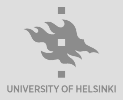Environmental awareness through mural art: a survey of iconographic representations of whales and polar bears on Italian walls
Abstract
Marine plastic pollution is one of the most significant global challenges, with domestic waste, fishing nets, and microplastics contributing to the formation of plastic islands in seas and oceans. Other forms of oceanic and coastal pollution are caused by agriculture, sewage, urban areas, industrial discharge, oil spills, maritime traffic, and more. In response to this, a whole series of awareness and educational initiatives has aimed to highlight the threats faced by marine environments. Photojournalistic investigative projects, documentaries, videos produced by international organisations, and musical videos, among other artistic works, have tried to reshape how seascapes are perceived. Within the context of the relationship between geography and art, this contribution explores how artistic and creative actions, in particular through specific forms of muralism, have attempted to foster greater sensitivity towards the sea and the ocean within the Italian sphere. Adhering to the concept of popular culture as a means of disseminating environmental discourse, the research delves into the role of murals in shaping our perception of endangered seas and oceans, portraying seascapes in need of conservation. Through visual analysis and an iconographic approach, the article examines the portrayal of animals in artworks, emphasising how certain symbolic species (especially whales and polar bears) have become visual icons in promoting the conservation of seas and oceans. While the inclusion of such animals in artistic activism serves to evoke emotions and raise awareness of environmental issues, it also runs the risk of being criticised for oversimplification.References
Abel J., “The Ambivalence of Whaling: Conflicting Cultures in Identity Formation”, in Pflugfelder G. M. and Walker B. L. (Eds.), Japanimals: History and Culture in Japan’s Animal Life, Michigan, Center for Japanese Studies, 2005, pp. 314-341.
Adkins F., “Why polar bears are no longer the poster image of climate change”, 14th November 2023, https://www.bbc.com/ future/article/20231113-climate-change-why-photos-of-polar-bears-dont-work# (last access: 21/3/2024).
Amato F., “Il lungo dialogo tra arte e geografia. Il paesaggio urbano in trasformazione: i murales nei quartieri disagiati di Napoli”, Estetica. Studi e ricerche, 2, 2015, pp. 7-17.
Andresen S., “Whaling: peace at home, war abroad”, International Regimes and Norway’s Environmental Policy, 2004, pp. 41-63.
Armstrong P., “The postcolonial animal”, Society & Animals, 10, 4, 2002, pp. 413-419.
Barua M., Gurdak D. J., Ahmed R. A. and Tamuly J., “Selecting flagships for invertebrate conservation”, Biodiversity and Conservation, 21, 2012, pp. 1457-1476.
Bengtsen P., Street Art World, Lund, Alemendros de Granada Press, 2014.
Bengtsen P., “The monetization of the street art world and the fossilization of urban public space”, Visual Inquiry: Learning & Teaching Art, 9, 1-2, 2020, pp. 45-58.
Blanché U., “Street Art and related terms”, SAUC-Street Art and Urban Creativity, 1, 1, 2015, pp. 32-39.
Blok A., “Actor-networking ceta-sociality, or, what is sociological about contemporary whales?”, Distinktion: Scandinavian Journal of Social Theory, 8, 2, 2007, pp. 65-89.
Bowen G.A., “Document Analysis as a Qualitative Research Method”, Qualitative Research Journal, 9, 2, 2009, pp. 27-40.
Breitburg D., Levin L.A., Oschlies A., Grégoire M., Chavez F.P., Conley D.J. and Zhang J., “Declining oxygen in the global ocean and coastal waters”, Science, 359, 6371, 2018.
Carillo G., “Lo spettacolare murales di Torino contro l’inquinamento dei mari”, GreenMe, 2018. https://www.greenme.it/ lifestyle/arte-e-cultura/torino-murales-balena-rifiuti/ (last access: 29/3/2024).
Cosgrove D., Social formation and symbolic landscape, Madison, The Wisconsin Univer-sity Press, 1984.
Crutzen P.J. and Stoermer E.F., “The ‘Anthropocene’”, Global Change Newsletter, 41, 2000, pp. 17-18.
Danaher M., “Why Japan will not give up whaling”, Pacifica Review: Peace, security & global change, 14, 2, 2002, pp. 105-120.
De Innocentis I., Urban Lives. Viaggio alla scoperta della street art in Italia, Palermo, Dario Flaccovio, 2017.
Dell’Agnese E., Ecocritical Geopolitics: Popular culture and environmental dis-course, London-New York, Routledge, 2021.
Doney S.C., Ruckelshaus M., Emmett Duffy J., Barry J.P., Chan F., English C.A. and Talley L.D., “Climate change impacts on marine ecosystems”, Annual review of marine science, 4, 2012, pp. 11-37.
Dumont I., Tatuare la città. Per un’analisi geografica dell’arte urbana nello spazio pubblico, Rome, Società Geografica Italiana, 2024.
Farrelly T.A., Borrelle S.B. and Fuller S., “The Strengths and Weaknesses of Pacific Islands Plastic Pollution Policy Frame-works”, Sustainability, 13, 3, 1252, 2021.
Franklin A., Animals and modern cultures: A sociology of human-animal relations in modernity, London, SAGE Publications, 1999.
GESAMP, (IMCO/FAO/UNESCO/WMO/ WHO/IAEA/UN/UNEP Joint Group of Experts on Scientific Aspects of Marine Pollution), Scientific Criteria for the Selection of Waste Disposal Sites at Sea, Reports and Studies No.16, London, Inter-Governmental Maritime Consultative Organization, 1982.
Gianquitto M., Graffitismo & Street art, Missaglia (LC), Bellavite, 2019.
Goulletquer P., Gros P., Boeuf G. and Weber J., Biodiversity in the marine environment. Springer Science & Business Media, Netherlands, Springer, 2014.
Greenfield P., “Why it may be time to stop using the polar bear as a symbol of the climate crisis”, 30th August 2023. https://www.theguardian.com/environment/2023/aug/30/why-it-may-be-time-to-stop-using-the-polar-bear-as-a-symbol-of-the-climate-crisis (last access: 21/3/2024).
Guinard P. and Molina G., “Urban geogra-phy of arts: The co-production of arts and cities”, Cities, 77, 2018, pp. 1-7.
Hawkins H., “Dialogues and doings: Sketch-ing the relationships between geography and art”, Geography Compass, 5, 7, 2011, pp. 464-478.
Hawkins H., “Geography and art. An expanding field: Site, the body and practice”, Progress in Human Geography, 37, 1, 2013, pp. 52-71.
Hirschman E.C., “Aesthetics, Ideologies, and the Limits of the Marketing Concept”, Journal of Marketing, 47, 1983, pp. 45-55.
Iovino S., Ecologia letteraria. Una strategia di sopravvivenza, Milan, Edizioni Ambiente, 2006.
Iovino S., “Utili strumenti per pensare l’impensabile. Le environmental humanities e le narrative della crisi ecologica”, Culture della Sostenibilità, 20, 2, 2017, pp. 10-22.
Iovino G., “Is the street art a driver for tourist valorisation of marginal urban contexts? The experience of Naples”, GeoProgress Journal, 6, 2, 2019, pp. 79-100.
Islam M.S. and Tanaka M., “Impacts of pollution on coastal and marine ecosystems including coastal and marine fisheries and approach for management: a review and synthesis”, Marine pollution bulletin, 48, 7-8, 2004, pp. 624-649.
Jepson P. and Barua M., “A theory of flagship species action”, Conservation and Society, 13, 1, 2015, pp. 95-104.
Katz C., “Whose nature, whose culture? Private productions of space and the preservation of nature”, In Braun B. and Castree N. (Eds.), Remaking reality: Nature at the millennium, London-New York, Routledge, pp. 46-63, 1998.
Kerber H. and Kramm J., “From laissez-faire to action? Exploring perceptions of plastic pollution and impetus for action. Insights from Phu Quoc Island”, Marine Policy, 137, 104924, 2022.
Lebreton L., “The status and fate of oceanic garbage patches”, Nature Reviews Earth & Environment, 3, 11, 2022, pp. 730-732.
Lefebvre H., Le droit à la ville, Paris, Anthopos, 1968.
Lo Presti C., “Art and public space. The case of street poems in Florence”, Rivista Geografica Italiana, 123, 3, 2016, pp. 401-416.
Lorimer J., “Nonhuman charisma”, Environ-ment and Planning D: Society and Space, 25, 5, 2007, pp. 911-932.
Mastroianni R. (Ed.), Toward 2030. L’arte urbana per lo sviluppo sostenibile. Fotografie di Martha Cooper, Milan, Feltrinelli, 2019.
Mathews V., “Aestheticizing space: art, gentrification and the city”, Geography Compass, 4, 6, 2010, pp. 660-675.
Mela S., “Arte pubblica e rigenerazione urbana: il caso del quartiere Aurora a Torino”, Fuori Luogo. Rivista di Sociologia del Territorio, Turismo, Tecnologia, 9, 1, 2021, pp. 161-173.
O’Neill S., “An iconic approach to representing climate change”, PhD Thesis, University of East Anglia Department of Environmental Sciences, 2008.
O’Neill S., “Defining a visual metonym: A hauntological study of polar bear imagery in climate communication”, Transactions of the Institute of British Geographers, 47, 4, 2022, pp. 1104-1119.
O’Neill S. and Nicholson-Cole S., “‘Fear Won’t Do It’: Promoting positive engagement with climate change through visual and iconic representations”, Science Communication, 30, 3, 2009, pp. 355-379.
Pavlidou A., Giani M. and Yakushev E.V., “Interaction between climate change and anthropogenic pressures in the eutro-phication process (Vol. II)”, Frontiers in Marine Science, 11, 1399298, 2024.
Perlmutter D., Photojournalism and foreign policy: Icons of outrage in international crises, Westport, Praeger Series in Political Communication, 1998.
Peterson M.J., “Whalers, cetologists, environmentalists, and the international management of whaling”, International Organization, 46, 1, 1992, pp. 147-186.
Privitera D., “Eventi urbani e spazio pub-blico. Il festival di street art tra territorialità e globalità”, Memorie geografiche, 15, 2017, pp. 327-333.
Richardson B.J., “Art and activism in transnational environmental governance”, in Heyvaert V. and Duvic-Paoli L.A. (Eds.), Research Handbook on Transnational Environmental Law, Cheltenham & Northampton, Edward Elgar Publishing, 2020, pp. 248-266.
Riggle N.A., “Street art: The transfiguration of the commonplaces”, The Journal of Aesthetics and Art Criticism, 68, 3, 2010, pp. 243-257.
Roberts M., “Geographical education is powerful if...”, Teaching geography, 42, 1, 2017, pp. 6-9.
Rose G., Visual Methodologies: An Intro-duction to Researching with Visual Mate-rials, London-Thousand Oaks-New Delhi, Sage, 2012.
Schacter R., “The ugly truth: Street art, graffiti and the creative city”, Art & the Public Sphere, 3, 2, 2014, pp.161-176.
Sebo J., “Wild animals”, in Hale B., Light A. and Lawhon L.A. (Eds.), The Routledge Companion to Environmental Ethics, New York, Routledge, 2023, pp.63-71.
Sebo J., “Moral circle explosion”, in Copp D., Rosati C. and Rulli T. (Eds.), The Oxford Handbook of Normative Ethics, Oxford, Oxford University Press, forthcoming (draft: https://jeffsebodotnet.files.wordpress.com/2022/09/jeff-sebo-moral-circle-explosion.pdf).
Simberloff D., “Flagships, umbrellas and keystones: is single species management passé in the landscape era?”, Biological Conservation, 83, 1998, pp. 247-257.
Suaria G., Avio C.G., Mineo A., Lattin G.L., Magaldi M.G., Belmonte G., Moore C.J., Regoli F. and Aliani S., “The Mediterranean Plastic Soup: synthetic polymers in Mediter-ranean surface waters”, Scientific reports, 6, 1, 37551, 2016, pp. 1-10.
Visconti L.M., Sherry Jr J.F., Borghini S. and Anderson L., “Street art, sweet art? Reclaiming the ‘public’ in public place”, Journal of consumer research, 37, 3, 2010, pp. 511-529.
Witze A., “It’s final: the Anthropocene is not an epoch, despite protest over vote”, Nature, 2024, https://www.nature.com/ articles/d41586-024-00868-1 (last access: 29/3/2024).
Downloads
Published
Issue
Section
License
The Author assigns to the Nuova Cultura and to Italian Association of Geography Teachers all rights under copyright that can exist in and to the submitted paper. The Author warrants that the paper and images (photos, maps, graphs etc.) are original and that he/she is the Author of the submitted contribution and its parts; in the case of images taken by other publications, the Author must provide a specific authorization and must pay in advance any copyright.

This work is licensed under a Creative Commons Attribution 4.0 International License.












